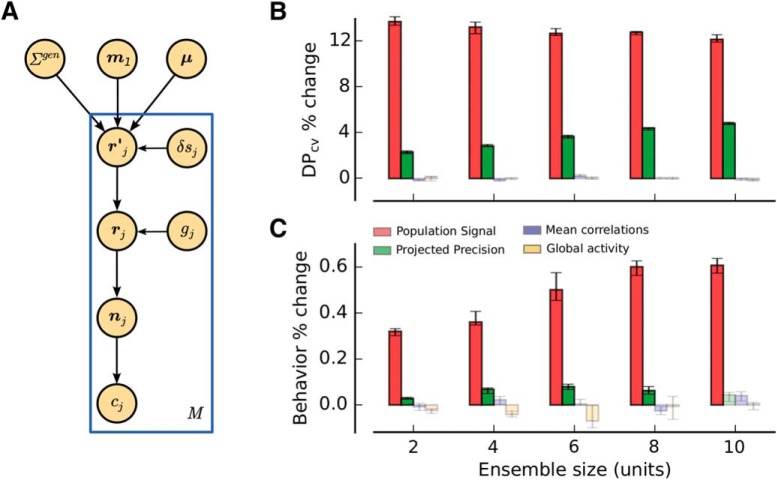Figure 10.
An experimentally constrained neural population model accounts for the empirical findings. A, Generative model for the simulated neuronal responses. A population of N model neurons was characterized by linear tuning curves with slope m1. An intermediate activity pattern (rj′) was obtained by drawing an N-dimensional sample from a multivariate Gaussian distribution (mean μ and covariance Σgen) and then corrupting it with sensory noise (δsj) on every trial j (rj) (M trials in total). A homogeneous response gain modulation (gj) and a Poisson step were applied to produce the final population spike count (nj). The choice of the virtual agent (cj) was obtained by an optimal readout of the population activity pattern on each trial (see Materials and Methods). B, Percent change in the amount of information encoded by the model (DPcv), as a function of the ensemble size, when bootstrap fluctuations of different features of the neural activity are isolated. Only isolated bootstrap fluctuations in PS and PP influence the amount of information encoded by the population, consistent with the experimental observations (Fig. 6). C, Percent change in behavioral performance predicted by fluctuations in different statistical features of model population activity. PS and PP are the most important factors influencing behavioral performance. The magnitude of changes in behavioral performance is similar to that observed experimentally (Fig. 9). See also Figure 10-1.

